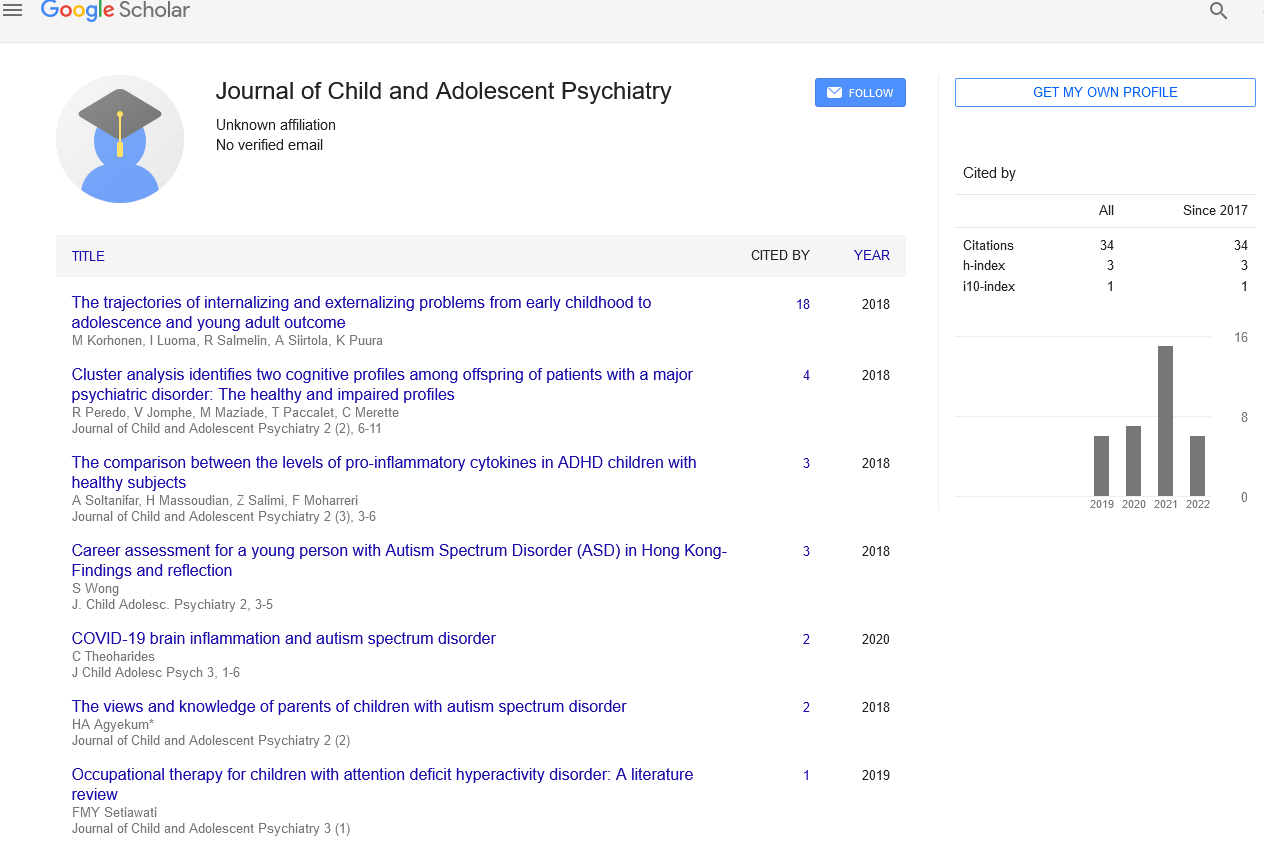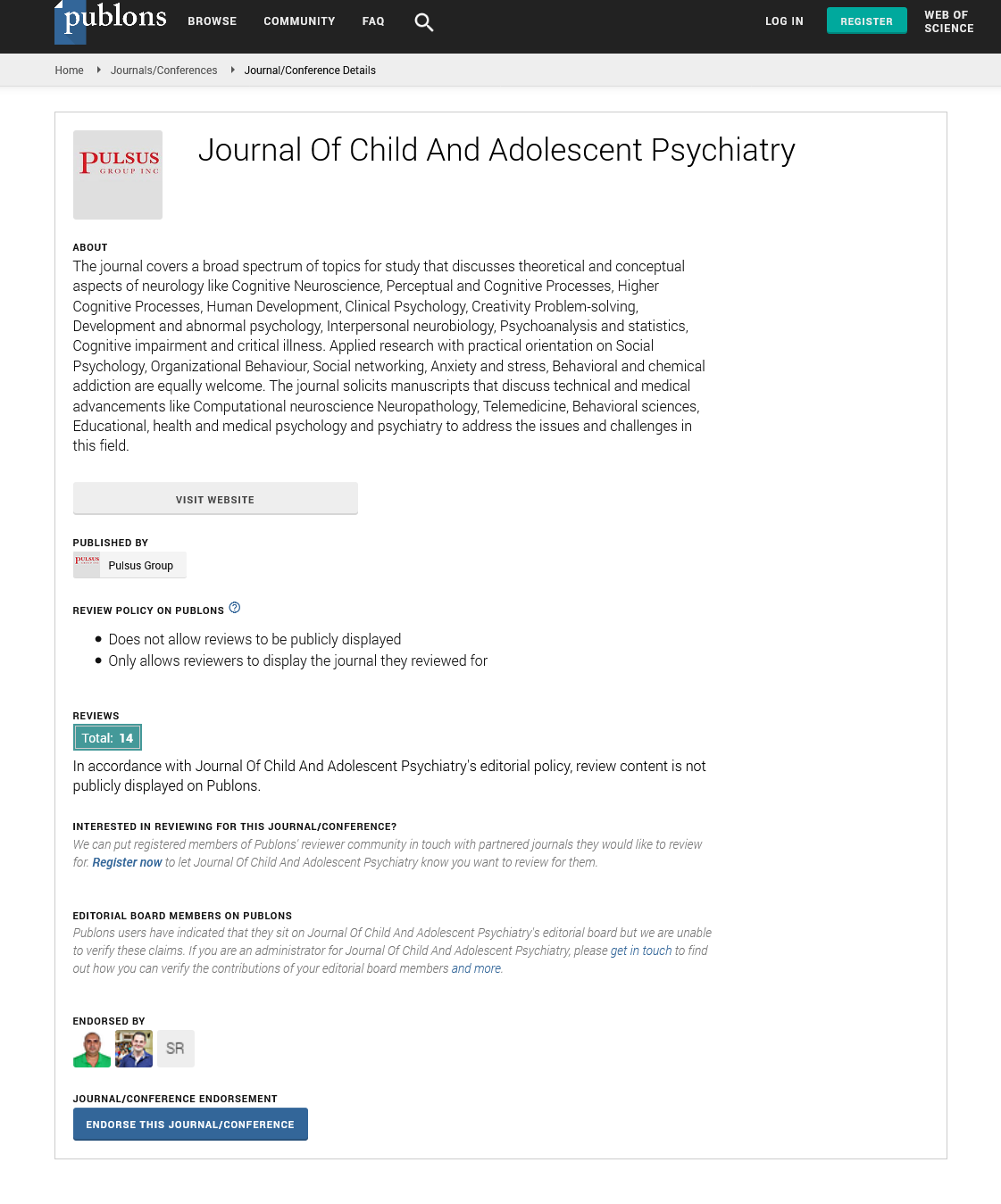Community-based participatory research as a strategy for increasing family engagement in school settings
Received: 22-Apr-2022, Manuscript No. PULJCAP-22-4740; Editor assigned: 24-Apr-2022, Pre QC No. PULJCAP-22-4740(PQ); Accepted Date: May 18, 2022; Reviewed: 28-Apr-2022 QC No. PULJCAP-22-4740(Q); Revised: 03-May-2022, Manuscript No. PULJCAP-22-4740(R); Published: 14-May-2022, DOI: 10.37532/puljcap.2022.6(3)22-23
This open-access article is distributed under the terms of the Creative Commons Attribution Non-Commercial License (CC BY-NC) (http://creativecommons.org/licenses/by-nc/4.0/), which permits reuse, distribution and reproduction of the article, provided that the original work is properly cited and the reuse is restricted to noncommercial purposes. For commercial reuse, contact reprints@pulsus.com
Abstract
In this article, the authors have presented the findings of a study using Community-Based Participatory Research (CBPR) to create partnerships among communities, families, and schools with the goal of increasing family engagement. This study was implemented in an economically and ethnically/racially diverse elementary school which also faces significant turnover of families and students each year. Thus, building community and encouraging engagement of families must be a continuous process. The authors assert the importance of engaging families by recognizing their strengths, seeking to reduce the power differential between families and school staff, and genuinely encouraging full partnership and participation by asking families directly what they need, what they want, and what they can contribute to the school community. CBPR is a methodology whereby members of the community are engaged in the research process from formulation of research question(s) to data collection to analysis and interpretation of data, and finally to recommendations and implementation of those recommendations. Essentially, CBPR is both a research approach and an intervention, as family and community members develop skills that can be applied in the future and feel empowered to make changes. The article describes this process in this particular community.
Key Words
CBPR; Family engagement
Introduction
Family engagement is a preferred term to parental involvement and will be used throughout this commentary for the following reasons: Many children are being cared for by people other than their biological parents; a significant number are being raised by grandparents and other extended family, some are in foster care, and others may have other caregivers. Thus, ‘parents’ may be a limiting term for the various people in caregiver roles. Further, because of changing family dynamics and makeup, as well as different cultural understandings of what constitutes ‘family’ the definition of family rests in the hands of the family, itself. It is beneficial to think of engaging the entire family as self-defined. Likewise, the term ‘involvement’ may signify to some the inclusion of parents or family in selected activities while ‘engagement’ denotes full participation in planning and promoting activities that are meaningful for families in support of their students.
Importance of Family, Importance of School
While the entire ecology of the developing child is important, the two most significant systems for children are the family and the school. When those systems are well-integrated, the child has a richer environment for development [1,2]. The evidence for the value of family engagement in schools is extensive[2,3]. Few would dispute the benefits for school children and youth, in terms of academic achievement as well as psychological and social development, of having strong connections between home and school and of having parents or caregivers engaged in the school experience. It stands to reason that the more aware parents and caregivers are of the expectations of the school day and the more fully engaged they are in school activities, the better the outcomes for students. As a result of the covid-19 pandemic, we have become acutely aware of the significant role school plays in our society as well as the losses students and families experience when students are not in school. Even though school staff made efforts to continue instruction while transitioning to remote learning, across the country student achievement dropped. These losses were more significant for students of color and low-income students as well as students with disabilities. Students missed out socially from not being able to engage as frequently with their peers and adults outside of their family. Mental health concerns including anxiety and depression have been raised for students[4,5,6]. “The Covid-19 pandemic has disrupted almost all facets of children’s and adolescents’ daily lives, and the pandemic’s impact will likely be seen both immediately and as academic, social, and emotional trajectories unfold over time”. Families, too, suffered and continue to suffer from the anxiety and economic and other stressors created by the pandemic and can benefit from continued outreach from school staff. Because education is relational, family engagement plays a central role in the education process. [1-6].
Engaging Diversity
In the increasingly diverse public school setting it is imperative that school personnel broaden the traditional understanding of family engagement. There are many reasons why a traditional model of helping in the classroom, being in the PTA, or making copies in the office may be threatening, less appealing, or not even feasible for some families. Work hours, fears around documentation, and transportation challenges can present barriers to engagement. Other challenges include “language, cultural, and socioeconomic dissonance between families and schools” .The school environment, itself, may be uncomfortable for many families. While understanding the need for increased security in school buildings, efforts can be made to ensure that all families feel welcome in the school setting. This requires school personnel to build on family strengths, acknowledge cultural differences, and recognize that families have tremendous insights. In the study reviewed here [7], parents and other family members recognized the need for bilingual staff. They also clearly articulated their interest in supporting each other and in creating opportunities to meet other families. This particular community is geographically located in an unincorporated area of a mid-sized city, but with no community center or good areas for children to play or for parents to meet each other. Families expressed their desire for these opportunities to socialize with other families. In this study, the success of a church-based dinner and activity program attests to this need. In this study, school administrators allowed the building to be used as a space for a totally parent/caregiver planned social event that was well attended and provided opportunities for family members to develop and implement leadership skills as well as meet other families.
Even though the school age population is increasingly diverse, school personnel, particularly certificated staff, do not parallel this level of diversity. In the United States, over 52% of the student body are children of color (U.S. Dept. of Education, 2021a) while nearly 80% of the teaching staff are white (U.S. Dept. of Education, 2021b). The importance of recruiting and retaining staff of color is clear; some schools have intentionally engaged parents/caregivers in the hiring process.
Family engagement begins with the assumption that families want what is best for their students/children. It is strengths-based, acknowledging and recognizing that all families bring strengths. It allows families to identify their own gifts and to name how they would like to partner and contribute. This model seeks to suspend judgment and dismantle one’s own biases.
There may be cultural differences where parents may engage with their children differently and may view their role with the school differently.Just as first-generation college students may not know now to navigate the college environment, recent immigrants or individuals who did not grow up seeing family engagement may not know how to navigate the school environment. Schools may assume that all parents know the ins and outs of school processes when that is not the case[8]. By incorporating strategies to engage families, school personnel can see the strengths families bring and families, students, and school personnel can learn from each other. In light of the pandemic, there may be the need to utilize increasingly creative strategies to engage or re-engage families and support them in becoming full partners with the school.
REFERENCES
- Benner AD, Mistry RS. Child development during the COVID‐19 pandemic through a life course theory lens. Child Dev Perspect.2020;14(4):236-243.
Google scholar Crossref - Garbarino J, Ganzel B. The human ecology of early risk. Handbook of early childhood intervention.2000;22(2):76-93.
Googlescholar Crossref - Hampden-Thompson G, Galindo C. School–family relationships, school satisfaction and the academic achievement of young people. Edu Rev. 2017;69(2):248-265.
Googlescholar Crossref - Henderson AT, Mapp KL. A New Wave of Evidence: The Impact of School, Family, and Community Connections on Student Achievement. Annu Synth,2002.
Googlescholar - Hill, N. E, Witherspoon, D. P,Bartz, D. Parental involvement in education during middle school: Perspectives of ethnically diverse parents, teachers, and students. J Educ Res, 111(1), 12–27.
Googlescholar Crossref - Hoofman, J, Secord, E. The effect of Covid-19 on education. Pediatric Clinics of North America, 68(5)
Crossref - Keller JG, Miller C, LasDulce C et al. Using a Community-Based Participatory Research Model to Encourage Parental Involvement in Their Children’s Schools. Child Sch. 2021; 43(3):149-158.
Googlescholar Crossref - LaRocque M. Addressing cultural and linguistic dissonance between parents and schools. Preventing school failure: Alternative education for children and youth. 2013;57(2):111-7.
Googlescholar Crossref






